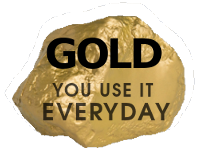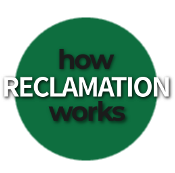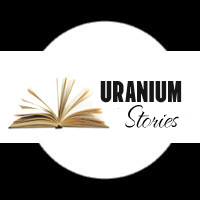- Why Mining Matters
- Jobs
- Safety
- Environment & Operations
- FAQ
- Links
- Fun Stuff
You are here

Gallihar and Dimock
Mr. Death
The Guilty Grenos
James Mitchell
Hugh McAskill
Gold Grows Under Shrubs?
Unexploded Dynamite
Tangier’s John Murphy
Joe Howe Dimock
Chats with Pioneer Miners
Charles Annand
John Scott Williams
Nicholas Fitzgerald
Chief Lonecloud
Pistols and Gold Mines
James MacDonald’s Thefts
John Vaughn
Herbert Dixon and the Halifax Explosion
James Bishop
Neily's Scandals
Waverley in 1934
Discovery of Gold at Dufferin
Hurricane Island
Fletcher and Faribault
Jack Munroe
Mine Apprentice Project
Small Gold Districts
15 Mile Stream
Tributers
E. Percy Brown and the Brookfield Mine
Barachois
Nova Rich Mines
Shad Bay Treasure Hunt
Montague 1937 Accident
Father Lanigan’s “Prospect”
George V. Douglas
The Stewart Brothers
Goldboro
Moose River's Touquoy Mine
Camerons Mountain
Jim Campbells Barren
Stanburne's Puzzling Gold Mine
Pockwock
Beaverbank Lake
Banook Mining Company
Deep Gold Mining
Wellington
Arsenic and Gold
Dynamite
War of Words
King of the Klondike
Oliver Millett
Kempt Gold Mining Company
Carleton
The Memramcook Fiasco
Love and Gold in Oldham
Montague 1893 Disaster
Central Rawdon Consolidated Mines
Cochrane Hill
Amateurish Early Gold Mining
Sable Island Gold
The Sea Wolf
Trueman Hirschfield
Alexander Heatherington
Prospector Joe Cope
Killag Quicksand
George W. Stuart
Wellington
Billy Bell
Cooper Jim Mine
South Branch Stewiacke
Walter Prest
Lake Charlotte
Acadia Powder Mills Company
The Ovens Anticline
Moose River Anticline
Avon Mine Explosion
Montague
Waverley Claims Dispute
Avon River
Moose River Disaster
Mooseland Scam
New York and Nova Scotia Gold Mining Company
Rosario Siroy and the South Uniacke Gold District
Blockhouse
Killag Gold District
Miller Lake
Baron Franz von Ellershausen
Mooseland: Nova Scotia’s first Gold Discovery
United Goldfields of Nova Scotia
Pleasant River Barrens Gold District
Lochaber Gold Mining Company
Rawdon Gold Mines
MacLean Brook
Gold in Clayton Park?!
Forest Hill
Meguma vs. Placer Gold
Uniacke
Voglers Cove
Gold River
Moosehead
Goldenville
Westfield
Indian Path
Harrigan Cove
Centre Rawdon
Nova Scotia’s Gold Mining History
WWII Gold
Middle River Gold District
Early Gold Discoveries
Halifax 1867
Paris Exhibition 1867
Mining and Tourism
An Act relating to the Gold Fields
Molega Gold District
Brookfield Gold District
Gays River
Halifax Gold
Caribou Gold District
Renfrew Gold District
Oldham Gold District
Whiteburn Gold District
Country Harbour Mines
Waverley Gold District
Robert Henderson and Klondike Gold
George Mercer Dawson
Cow Bay Gold District
Lake Catcha Gold District
Wine Harbour Gold District
Chats with Pioneer Miners
Historical mining records note when and where gold was discovered in Nova Scotia, and by whom, but they do not tell the colourful stories that often accompanied the finds. An 1883 newspaper article offers great details about the discoveries of gold in Tangier and Mooseland.
In an article called “Chats with Pioneer Miners” in the August 30, 1883, edition of the Halifax Herald, Peter Mason tells us how he discovered gold in Tangier, Halifax County.
The article said, “One hundred and forty years ago, when only three houses stood in Halifax, a French man named Masson is said to have settled at a spot sixty miles east of Halifax, which has since been known as Tangier. He was the grandfather of the hundreds of people now residing along there who are known by the name Mason. Some time after John Pulsifer discovered gold at Mooseland, twelve miles back from Tangier, a young fisherman named Peter Mason, who was rambling through the woods at a spot near where the post office and telegraph office now stands, stooped down to get a drink of water out of a pool.”
Mason, who was captain and owner of the boat that ran between Tangier and Halifax at the time the article was written, picked up the story:
“While drinking out of the pool, I noticed something shining out of a stone. The stone was about the size of an egg. I took it out. The piece of metal was a little larger than an ordinary of buckshot. Next time I went to Halifax, I showed it to a jeweler, and he told me that it was gold. When I returned to Tangier and assured the people that I had discovered gold, there was, of course, a good deal of excitement. We at once started a local company. There were 32 members – Masons, Murphys, Myers, and Fergusons. They were all fishermen. We worked for four days, mining with axes and other rude miners’ tools. We got some $60 worth of gold out of that pool of water. Then the company began to quarrel among themselves.”
Mason went on: “We were all fishermen, some thought gold – real, pure gold – was too good a thing for the others to have anything to do with, and with that belief they began to take away more than their share. They were altogether too fond of the ‘specimens.’ There were two parties, of sixteen each. I represented one party. We got disgusted and sold out our interest, that is, the interest of the party of sixteen, to the others for $20. Of course, we didn’t know what the mines were worth at that time. The other party afterwards quarreled among themselves and then sold out their interests to a third party for an insignificant sum - $20 or $30. Before this, however, the government had sent down William Anderson to survey and take possession of the district. The land was owned by the Masons. Anderson run off claims 50 feet long by 20 feet wide. The Mason heirs were magnanimously presented with one of these extensive claims. That was the one we quarreled over and sold. As the discoverer of the gold there I think I ought to have received some substantial recognition. But I never got a cent.”
“After we quarreled the Pioneer Company, William Mason and I went speculating. We bought a claim for £5, and shortly afterwards sold it to John Pulsifer the original discoverer of gold in Nova Scotia (at Mooseland) for £20. Then I went to the Magdalen Islands fishing. While I was away Pulsifer sold it to other parties at a good advance. The original spot where I found the gold fell into the hands of McCurdy and others. They took a lot of gold out of it. When I got back from the Magdalen Islands in May, 1861, I found the gold fever at its heighth [sic]. A village had grown out of the virgin forest. It was estimated that there were 1500 miners and mining men in Tangier. A daily steamer, the Neptune, was running to Halifax. In one day I counted nine vessels in Tangier loaded with supplies. About this time the government extended mining areas to three-quarters of an acre each. Then companies began to take hold of the mines. Very few Tangierians made money out of the mines. Andrew Barton is the only one I know of. He is reputed to have made $30,000 in buying and selling mining properties, and has the money now. The rest of the Tangierians were not accustomed to speculating and they devoted themselves to fishing.”
In another chat with a pioneer, John Murphy told the tale of how John Pulsifer found gold in Mooseland:
“The honor of being the original discoverers of gold in Nova Scotia were claimed by John Pulsifer, who now lives at Gay’s River, and another man whose name I have forgotten.”
(Two other names are associated with the discovery of gold in Mooseland: a British army officer, Captain Champagn L'Estrange of the Royal Artillery, found gold in Mooseland in 1858 while out for a day of moose hunting with a Mi'kmaq guide named Joe Paul. However, not much happened until two years later when Paul returned to the same site with Pulsifer, who wasted no time reporting the discovery of gold to government officials in Halifax and staking a claim. It was Pulsifer’s find and staked claim that triggered Nova Scotia’s first gold rush.)
Murphy continued with the story: “Pulsifer had been reading books about the gold discovery in California, and got so excited over it that he started to hunt for gold in Nova Scotia. That was in the fall of 1860. The circumstances of the discovery as related by Pulsifer to me, were as follows: With a companion he traversed along the coast of the Tangier river. After many days, if not weeks, and the exercise of a great deal of patience and perseverance they saw a piece of quartz in a little brook in the woods now known as Mooseland. Pulsifer broke it with his axe, and in it was found the precious metal!”
“What’s that?” he asked his chum.
“Brass” was the naive reply.
“Oh, no” said Pulsifer, “it’s gold! You don’t find brass in rocks. Eureka! I have discovered gold in Nova Scotia!!”
(Brass is a human-made combination of copper and zinc and does not occur naturally.)
Murphy said, “they then returned to Musquodoboit and spread the news. And the gold fever set in in Nova Scotia. In August 1861 I came to Tangier from Guysboro, searching for gold.”

















































































